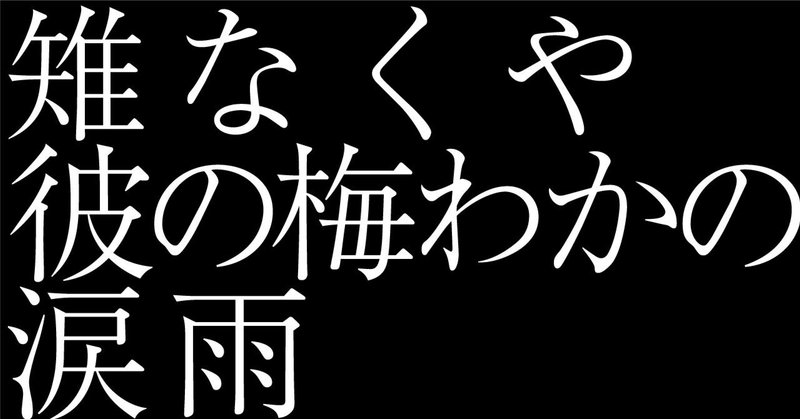
#296 AIが俳句を解釈したらこうなった。 「雉なくや彼の梅わかの涙雨」小林一茶
雉なくや彼の梅わかの涙雨
小林一茶
"The pheasant cries,
under his plum tree—
a rain of tears."
Kobayashi Issa

解説:
この俳句「雉なくや彼の梅わかの涙雨」は、小林一茶によって詠まれました。春の自然現象と深い感情表現が融合されており、独特の情緒を醸し出しています。以下で、風物詩、表現手法、および感情や情感について解説します。
風物詩
この句では、春に関連する三つの要素が取り上げられています:雉(きじ)の鳴き声、梅の花、そして涙雨(涙を連想させるような細かい雨)。雉の鳴き声は、春の訪れを告げる自然のサインの一つです。また、梅の花は春の代表的な花であり、その美しさは古来より多くの詩歌に詠まれています。涙雨は春特有の繊細な雨で、その様子がまるで空が涙を流しているかのように表現されることから、春の切なさや儚さを象徴しています。
表現手法
一茶は「彼の梅」という言葉を使用することで、特定の梅の木に対する個人的な感情や思い出を暗示しています。この梅の木は、語り手にとって特別な意味を持つかのように描かれ、その下で降る雨が「涙雨」として表現されることで、感情の深さが強調されます。この表現は、自然の美しさとそれに対する人間の感情的な反応との間の深い結びつきを示しています。
情緒や感情や情感や情念
この俳句は、春の美しさとそれに伴う感情の複雑さを巧みに捉えています。雉の声と梅の花、そして涙雨は、春の生命力と新たな始まりを祝福する一方で、それがもたらす切なさや儚さをも表しています。詠み手はこれらの自然現象を通じて、喜びと悲しみ、美しさとその儚さという対照的な感情を経験しており、読者にもその深い情感を感じ取ってもらうことを意図しています。
一茶のこの句は、春の自然が持つ豊かな美しさと、それに対する人々の感情的な反応を繊細に綴った作品です。自然現象が引き起こす感情の幅を探ることで、季節の変化が人の内面にどのように影響を与えるかを見事に表現しています。
英訳:
This haiku, "雉なくや彼の梅わかの涙雨" by Kobayashi Issa, captures the delicate interplay of springtime elements and human sentiment. Here is the translation and explanation in English, carefully preserving the poetic beauty and the deep connection to Japanese nature and culture found in the original.
The pheasant cries, under his plum tree— a rain of tears.
Seasonal Imagery
In this haiku, Issa intertwines three elements that are evocative of spring: the cry of the pheasant, the plum blossoms, and a gentle, tear-like rain. The pheasant’s call is a traditional sign of spring, heralding the season’s arrival with its distinctive sound. Plum blossoms, a beloved symbol of spring in Japan, represent the beauty and fragility of life. The "rain of tears" metaphorically describes a fine, misty rain, suggesting both the spring showers that nourish the earth and the emotive response such beauty elicits.
Expressive Techniques
Issa uses "under his plum tree" to personalize the scene, suggesting a specific, cherished place where the natural and the emotional intimately connect. The phrase "a rain of tears" beautifully captures the dual imagery of the natural rain and the emotional, tearful reaction to the transient beauty of the season. This blend of the literal and the metaphorical enriches the haiku, providing depth and resonance that invite reflection on the impermanence of beauty and the poignant responses it evokes.
Emotions and Sentiments
This haiku evokes a sense of poignant beauty intertwined with melancholy. The pheasant’s cry, the ephemeral plum blossoms, and the gentle rain combine to create a scene of deep emotional and aesthetic appeal. The image of tears suggests both sadness and a deep appreciation for the fleeting beauty of spring. It reflects the complex feelings that arise when witnessing the transient splendors of nature—joy mixed with sadness, beauty tinged with melancholy.
Issa's haiku is a masterful depiction of the emotional landscape of spring, capturing the profound impact of nature’s ephemeral beauty on the human heart. Through this poetic vignette, he invites readers to experience the rich tapestry of feelings that the changing seasons evoke, celebrating the deep connection between the natural world and human emotion. This haiku serves as a poignant reminder of the transient yet impactful moments that define our experiences of nature’s cycles.
小林一茶

小林一茶(1763年 - 1828年)は江戸時代後期の著名な俳人です。彼は信濃国(現在の長野県)の農家に生まれ、一茶という俳号で知られています。彼の作品は、自然や日常生活を素朴かつ感動的に捉えたものであり、特に小動物や子供に対する愛情が表れています。彼は「一茶調」と呼ばれる独自の句風を確立し、松尾芭蕉や与謝蕪村と並び称されるほど評価されています。詳細はWikipediaの小林一茶のページで確認できます。
四月十七日
(英訳:ChatGPT 解説:Bing / ChatGPT 画像生成:midjourney)
この記事が気に入ったらサポートをしてみませんか?
